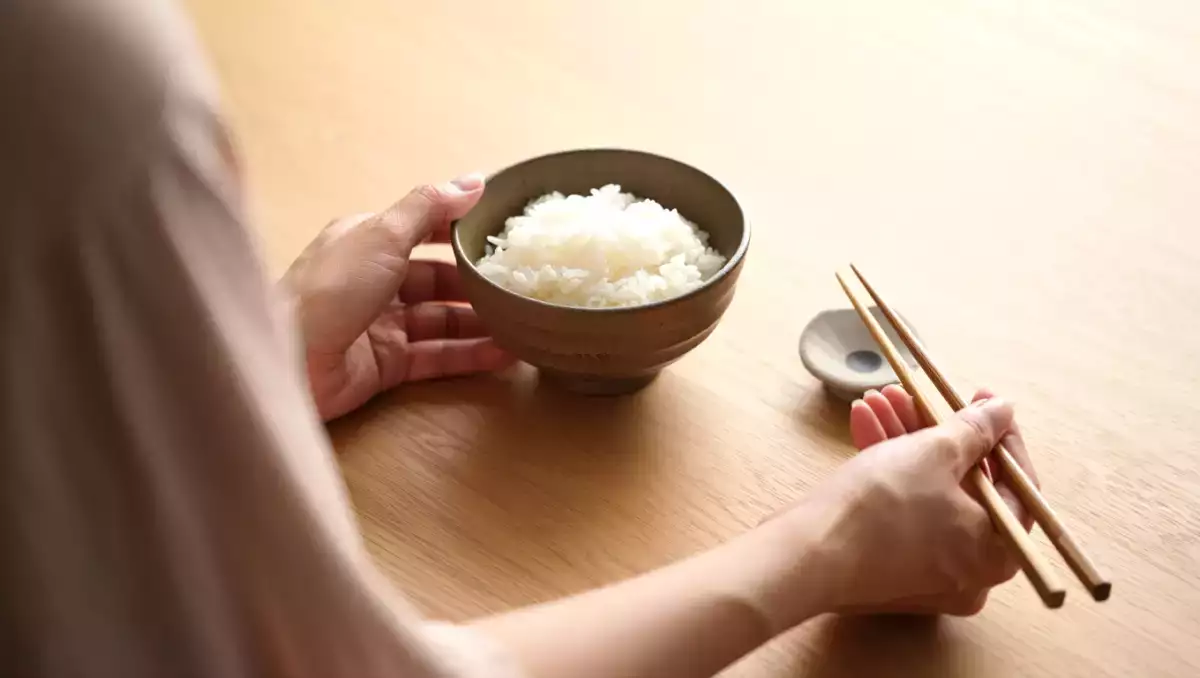The gestures that make you uncomfortable in a Japanese restaurant and almost all of us do without knowing it

In Japan, eating is much more than an everyday act: it is an exercise in mindfulness. Eating means respecting the raw material, the hand that prepares it and the space that is shared. That is why every movement, from how a bowl is held to how a meal is appreciated, has a meaning. Etiquette is not a list of prohibitions, but a way of caring for the harmony of the moment.
And while the foreign visitor will rarely be reprimanded for a mistake, knowing the basic rules helps to understand something essential: that the table, in Japan, is also a ceremony. And if you ever visit the country, or simply sit in a Japanese restaurant here, understanding these customs will make the experience much more meaningful. Here's what you shouldn't do:
Use the oshibori as if it were any other cloth
Before the first course arrives, the waiter offers you, on a tray or with tongs, a small rolled up wet towel. In winter it is warm; in summer it is cool. It is called oshibori and only serves to wipe your hands before eating. Neither the face nor the table.
And why not do it? Because what seems a minimal gesture contains a whole philosophy: to purify oneself before touching food. In Japan, cleaning the hands is not only a matter of hygiene, but of respect: a way to leave behind the dust and dirt of the day to sit, clean and calm, at the table.
Stick the chopsticks into the rice
Among the gestures that most baffle the Japanese is that of leaving the chopsticks (hashi) stuck in the rice. For a Westerner it may be a simple way to support them, but in Japan it has a funereal meaning: it recalls the incense offered to the deceased during funeral rituals.
So when you finish eating or take a break, never leave them upright. Place them on their small support (the hashioki) or, if there is no support, parallel to the bowl, calmly and quietly.
Eating before the person of higher rank or age
In Japan, the table has its own rhythm, and no one sets it on impulse. At a formal meal, no one touches the chopsticks before the person of seniority or rank.
And why not? Because that small gesture, waiting, sums up a good part of Japanese education: eating is not only feeding, but also accompaniment. The meal begins when the person who deserves respect does it, and following their rhythm is a silent way of acknowledging it: a mutual respect that is shown without words.
Leaving a tip
In Japan, gratitude is not measured in money. No matter how impeccable the service, tipping is considered unnecessary and can even be awkward. The custom is to bow the head slightly and say "gochisousama deshita", an expression that contains something deeper than a simple "thank you". It is a way of acknowledging the invisible work behind each dish: who cooked, who served, who chose the fish or rice.
And why not do it? Because here gratitude is not paid: it is expressed.
*Although, little by little, some locals in tourist areas are beginning to accept tips from visitors, most Japanese still prefer sincere gratitude.
Passing food from chopsticks to chopsticks
There is one gesture that, without knowing it, can be deeply uncomfortable in Japan: passing food directly from one pair of chopsticks to another. For the Japanese, this movement has a very strong symbolic charge. During funerals, family members transfer the bones of the deceased in the same way, from chopstick to chopstick, as part of an ancestral rite.
Repeating this gesture at the table, even if unintentionally, evokes death in a space that celebrates life. If you want to share something, the correct thing to do is to use the back of the chopsticks or place the food on an intermediate plate.
Use intense perfumes
You may think going to a good restaurant is often accompanied by the idea of wearing a good perfume. In Japan, this gesture is considered a mistake. There, the aroma of the food carries as much weight as its taste: the steam of freshly cooked rice, the fragrance of tea or the perfume of broth are all part of the pleasure of eating. A foreign smell breaks this balance and distracts the sense of smell. For this reason, those who go to a Japanese restaurant usually do so without intense fragrances. The focus should be on the dish, not on the eater.
Dip the sushi in soy
It's a common gesture: we take a piece of sushi and dip it whole in soy sauce. But in Japan, this is considered a mistake. The soy is not meant to soak the rice, but to enhance the flavor of the fish. Soaking the sushi until it drips is perceived as an excess, a way to erase the chef's work. Each piece is thought out to the millimeter: the exact proportion of rice, fish and wasabi, and the thin layer of soy, which is often applied with a brush by the itamae himself before serving. That is why, when eating, only one corner of the fish is dipped (never the rice) and it is brought to the mouth in a single bite, just as it was conceived.
The ritual that also inhabits the everyday
What we perceived as "ceremonious" - the precise movements, the silence, the composure - in Japan is not limited to special occasions, but is part of a mentality that is expressed even in the act of eating. It is a discreet respect, an almost unconscious attention that permeates everyday gestures: how dishes are served, how the bowl is held, how one avoids talking with a full mouth or moving utensils carelessly. It is not reserved only for formal meals, banquets or celebrations; in everyday life, this same logic becomes simpler, but does not disappear.
 Patricia González
Patricia González
Comments